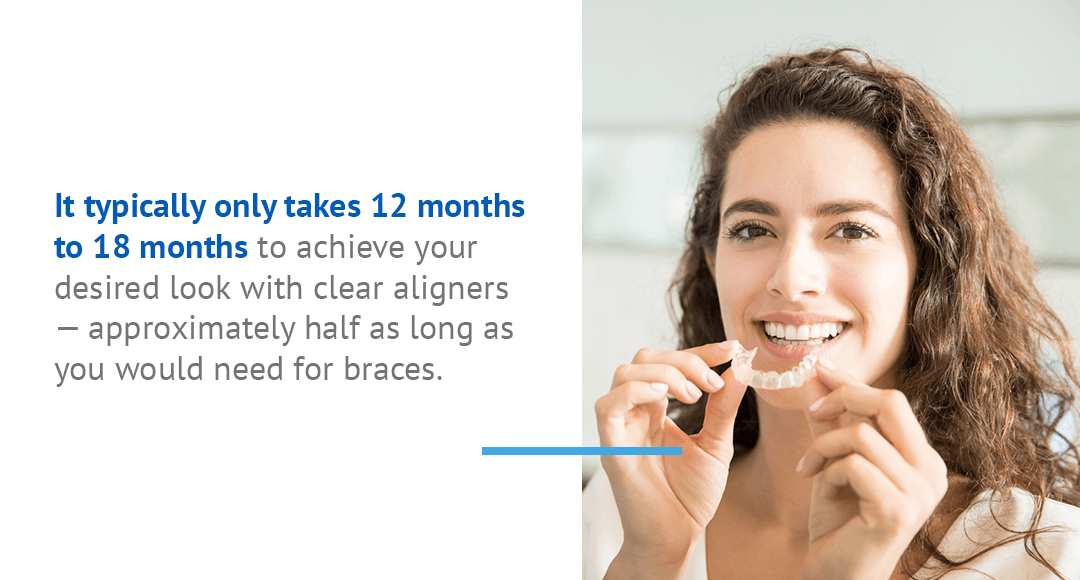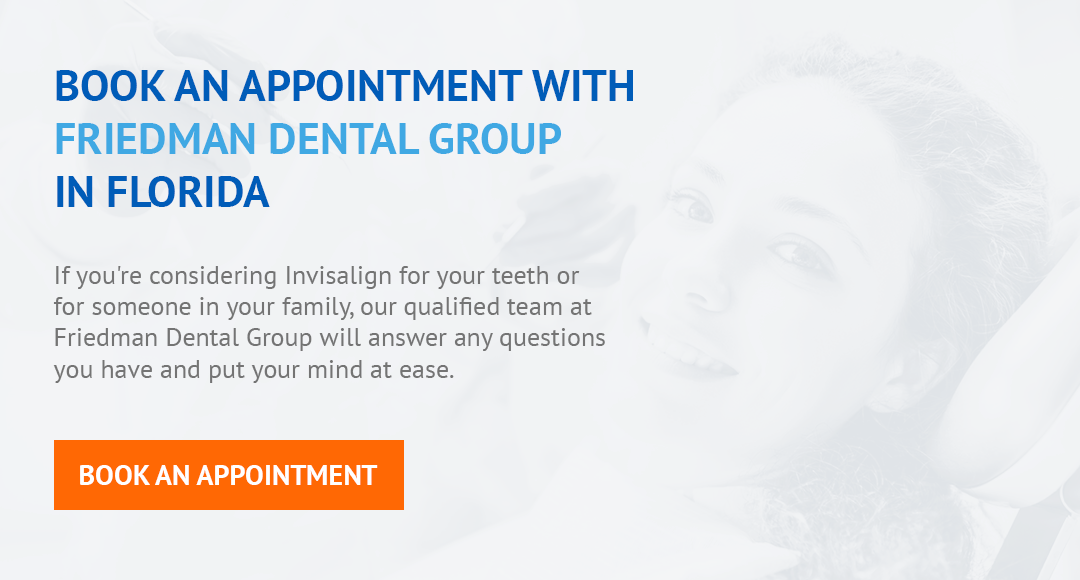Invisalign is an alternative to traditional braces that can help straighten your teeth and boost your self-confidence. Though there are several myths about Invisalign you may have heard, this dental treatment method can be more comfortable and less noticeable than braces. You can improve your smile without the hassle and pain that comes with braces. Check out these Invisalign myths to learn the truth about what it offers and decide if it’s right for you.
1. Invisalign Is Painful
Invisalign’s design and functionality can make it a less painful alternative to braces. Instead of wires and brackets from braces, Invisalign has plastic liners to avoid cuts on your cheeks and lips. You can also remove the clear aligners before eating, which can cut down on the pain of managing tricky foods with braces. Keep in mind that you may experience discomfort during the first week or so of wearing Invisalign, just as you would with braces.
Here’s how to handle Invisalign pain as your mouth gets accustomed to your new dental treatment:
- Choose soft foods, such as smoothies or drinks, and cut up meat so you don’t have to chew it as much.
- Use orthodontic wax on any sharp edges to relieve pain in the corners of your mouth.
- Place a cold compress over painful areas in your mouth to reduce swelling.
- Start your new aligners before bedtime to sleep during most of the uncomfortable hours of the treatment.
- Remove your dental trays during meals with retrieval tools so you don’t break them.
2. Invisalign Can Only Fix Small Problems
You may think Invisalign is only helpful for people who have a slightly crooked bite, but even if you have a complex orthodontic issue, this dental treatment can help you. Clear dental aligners can complete the following corrections for your smile:
- Fill in gaps between two or more of your teeth.
- Correct your teeth position if you have an overbite, underbite or crossbite, which can occur when you close your mouth.
- Space out overcrowded teeth when most of your teeth are in the front of your jaw.
- Align crooked teeth to give your smile a straight row of teeth.
Make an appointment with your dentist to confirm that clear aligners can fix your smile effectively and boost your confidence again.
3. Invisalign Is More Expensive Than Braces
The price of Invisalign is comparable to traditional methods, especially braces. The cost also depends on several factors, including:
- The complexity of the issues with your teeth.
- The average cost based on where you live.
- The price your dentist will charge for labor.
- The cost of the retainers you’ll need after you’ve completed treatment.
- The adjustments you’ll need for your clear aligners.
- The amount your insurance will cover.
If you don’t think Invisalign is in your budget, talk to your dentist about setting up a monthly payment plan. Only your dentist can determine the actual price of what you’ll end up paying for clear aligners. Investing in this dental treatment can improve your health and self-image, so whatever money you put into your teeth will be worth it.
4. Invisalign Takes Longer Than Braces
You may think that because you can remove Invisalign aligners from your mouth, they take longer to adjust your teeth than braces do. It typically only takes 12 months to 18 months to achieve your desired look with clear aligners — approximately half as long as you would need for braces. The complexity of your teeth issues will affect how long you need to wear your aligners.

To make sure you end your treatments on time or early, you should:
- Carefully follow your dentist’s instructions.
- Keep your aligners in for 20 hours to 22 hours a day so they can work efficiently.
- Take care of your trays and have your dentist prepare a replacement if one cracks.
- Brush out food particles and plaque that could build up inside your dental straighteners.
- Deep clean your aligners at least once a week with water and mouthwash.
- Change aligners at the proper time and bring new ones with you when you’re traveling.
5. Health Insurance Doesn’t Cover Invisalign
Most insurance companies will cover clear aligners like they’d do with traditional braces. Check with your health or dental insurance to find out what they’ll cover. If you’re struggling to pay for Invisalign, you can consider the following options:
- Payment plans with your dentist
- Possible discounts if you have pay for it in full
- Financing options with a down payment
- A Health Savings Account (HSA)
- A Flexible Spending Account (FSA)
6. You Can’t Eat Certain Foods With Invisalign
Invisalign is advantageous compared to traditional braces because you can remove your aligners during meals. That means you can eat whatever you want while maintaining the quality of your dental treatment and your teeth’s alignment. You can drink water with aligners in your mouth, but you should take them out anytime you eat to prevent choking or damage.
To maintain your teeth’s alignment, it might help to avoid these foods when you first start wearing clear aligners:
- Hard foods and candies that could cause cracks or chips in your teeth
- Sticky, chewy foods that can get stuck in your teeth and cause plaque and cavities
- Liquids such as coffee, tea and wine that can stain your aligners while you’re wearing them
7. Invisalign Is Intended for Adults
Even though adults tend to use clear aligners to correct issues with their teeth, this treatment also works well for children and teens. Invisalign is a much less stressful way to align their teeth than clunky braces that may make them self-conscious. There’s a whole line of dental treatments dedicated to teens, and children as young as six years old can start using this dental care for their misaligned teeth.
Here are some of the reasons your child or teen can benefit from Invisalign:
- Since they remove their aligners while brushing and flossing, there’s no interruption to their morning and night routine.
- They eat without the aligners in their mouth, so you don’t need to figure out a new diet for them.
- Aligners are more comfortable to wear than braces, and there’s no chance of broken wires.
Your dentist will determine whether your kids can handle clean aligners based on their age and teeth positioning. The child should be mature enough to keep the hardware in their mouth for 20 to 22 hours, and they should have lost all their baby teeth.
Book an Appointment With Friedman Dental Group in Florida
If you’re considering Invisalign for your teeth or for someone in your family, our qualified team at Friedman Dental Group, will answer any questions you have and put your mind at ease. To check out our facilities and learn more about our world-class service, book an appointment with us.
Last Reviewed By Dr. Eli Friedman on August 20, 2020

